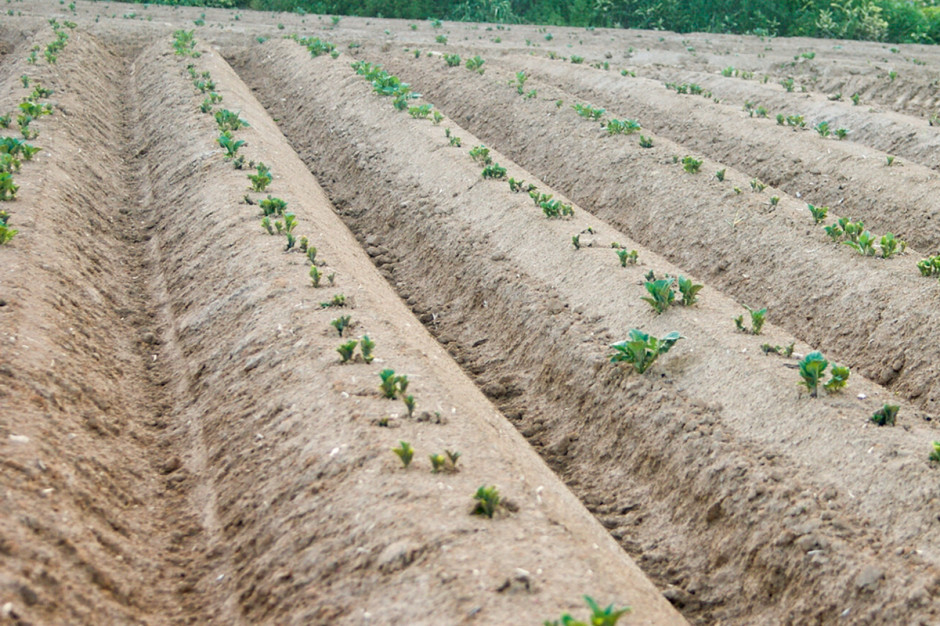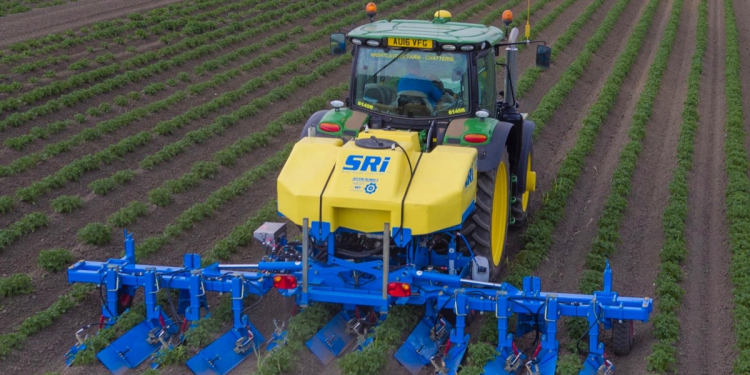Details are important in potato cultivation. One of them are ridges, because their shape, date of completion and treatments performed after their formation are extremely important for the quality and amount of tuber yield. Three farmers wanted to share with us their practical knowledge in this field.
Simply put, the ridges in potato cultivation are the place of its development and growth. A good ridge provides a lot of space for tubers produced in the tuberization process, which is why the most popular ridge spacing in Poland is 75 cm, and a large number of potato farmers also work at a spacing of 90 cm. According to the literature, the optimal ridge should be approx. 30 cm high and approx. 20 cm wide at the top of the ridge. In practice, there are two types of ridge shapes. The most popular are those with a trapezoidal cross-section.

There are comfortable conditions for potatoes of varieties in which the tuberization process takes place under the seed potato. However, varieties where this process is done above the seed potato will feel more comfortable in rounded ridges with more soil on the sides. The soil in the ridge should be plump so that there are comfortable conditions for growing there, but at the same time the surface of the ridge must be so compacted that it will not be washed away by rainwater (or rainwater) or blown by the wind.
Гребни можно формировать во время посадки сеялкой, оснащенной формирующими пластинами. Формовку можно проводить сразу после посадки или непосредственно перед появлением первого ботва над рядком. Однако в органическом земледелии окучивание картофеля может быть способом борьбы с сорняками, к которым картофель чрезвычайно чувствителен перед закрытием междурядий. Гребни можно формировать во время посадки сеялкой, оснащенной формирующими пластинами.
Ridge shaping eliminates weeds
Jacek Szwarc grows starch potatoes on an area of 7.5 ha on his farm. The farmer works in the vicinity of Inowrocław, in the province Kuyavian-Pomeranian Voivodeship. The soils on his farm are mosaic-shaped, from 1st to 5th valuation class. When it comes to yield, Mr. Jacek collects from 35 to 60 tons of potatoes per ha, depending on the weather and irrigation possibilities. The farmer plants potatoes at a distance of 75 cm with a planter without a molding machine. Before planting, the soil is seasoned with a cultivator.
Potatoes are planted not too deep, but are therefore less prone to rhizoctoniosis as they are placed in warm soil after planting. Szwarc waits to enter the molding machine until (usually 2-3 weeks from planting) until the first potato sprouts are right next to the soil surface. Then, on light soils, a passive mold is used, and active on heavier soils. As the farmer says, this treatment must be done carefully so as not to move the ridges.
Избавление позволяет восстановить форму гребня и присыпать теплой почвой, которая способствует росту растения и его аэрации. Он также механически уничтожает все вредные сорняки, что облегчает дальнейшую химическую борьбу с сорняками. Это связано с тем, что после формирования почва на гребне остается влажной, и гербицидный спрей, применяемый в таких условиях, более эффективен в борьбе с сорняками.
Это немаловажно в эпоху отказа от все большего и большего количества активных веществ. Что касается компактности гребня, как говорит Шварц, благодаря своему многолетнему опыту он может на глаз определить, выдерживает ли данный гребень дождевую воду и сильный ветер, вызывающий ветровую эрозию. Избавка позволяет восстановить форму гряды и засыпать ее теплой почвой, которая способствует росту растения и его аэрации. Он также механически уничтожает все вредные сорняки, что облегчает дальнейшую химическую борьбу с сорняками.
Forming ridges before planting
Paweł Góra, who farms near Ćmielów in the province of Świętokrzyskie. Its soils have a high clay content. Potatoes have been grown on the farm for almost 20 years. In the coming season, he will plant 45 ha of edible potatoes for processing. In spring, the farmer, using an active molding machine, creates ridges 75 cm wide, in which, in the next pass, he plants potatoes with a planter adapted to this technology.
The advantage of this method is that the planter does not pull out the wet soil during planting. If spring is wetter, ridges are formed a few days before planting to allow the soil to dry out a bit. If, on the other hand, spring is dry, the ridges are formed just before planting in order not to overdry the soil.
The planter is equipped with forming plates with a hydraulic pressure. As a result, the potatoes in the ridges are always sprinkled evenly, even on hilly terrain. The ridge itself, as the farmer emphasizes, should have a delicate crust after forming, which prevents it from drying out and blurring. Then a weed spraying is performed. Mr. Paweł emphasizes that the advantage of this method is that the potato lies in the ridge after planting and is not moved during the next redrawing process.
Это потому, что он негативно влияет на его ростки и, как следствие, на урожайность. Среди прочего, благодаря такому подходу Гура собирает 40 т / га картофеля с так называемым товарным урожаем. после формирования у него должна быть нежная оболочка, не позволяющая ему высыхать и размываться. Затем проводится опрыскивание сорняками.

Potatoes without plowing
A completely different approach to the cultivation of potatoes is taken by Krzysztof Brzozowski, who manages the village of Koszwała in the province of Pomeranian. The farmer grows 45 hectares of potatoes for French fries in the Żuławy madhes. – We have no problems with the temperature of the soil, because thanks to its dark color it absorbs a lot of solar radiation, which also speeds up the drying process. However, in the case of wet and cold spring, there is a problem with excess moisture.
So I was looking for a way to solve these problems and the solution turned out to be cultivation without plowing, which has been used for 7 years, but I do not think that properly done winter plowing in our conditions is a mistake – says the farmer. In the fields intended for potatoes, the farmer in autumn forms a 75 cm wide ridge with the help of a converted stubble cultivator and sows intercrops. Whereas in spring, when the soil has adequate moisture, it drives in the planting “harvester” consisting of an active molder, planter and passive molder and plants potatoes in one pass.
The farmer emphasizes that the most important thing with such a planting system is to wait for the right moment to start planting. The coulter must not be blurred. An additional advantage of forming ridges with an active machine is the destruction of clods of soil that could make harvesting difficult during digging.

It is also important to save a lot of work needed to set up a plantation. Brzozowski emphasizes that he chose this method because the potatoes intended for fries are large and each additional process of doughing makes them move. This, in turn, causes the occurrence of greening, which in the two-stage technology remained at the level of 5-6%, and currently it is not more than 2 percent. Harvest 35 t of potatoes per ha in a commercial yield without irrigation in a dry year, and when the conditions are good, the yields reach 45 t / ha.








